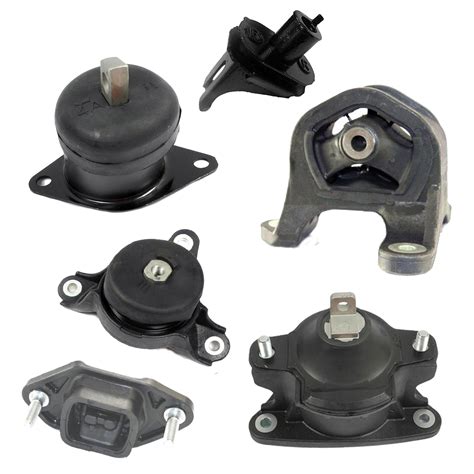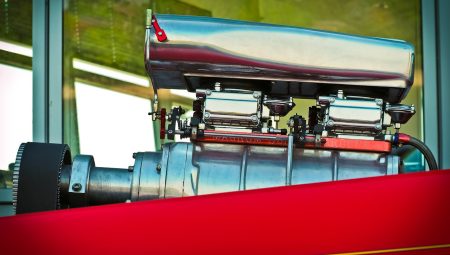Explore engine mounts, their types, functions, signs of wear, and replacement tips. Understand how these components impact your vehicle’s performance and longevity.When it comes to the performance and longevity of your vehicle, understanding the components that help secure the engine and transmission is crucial. Engine mounts and transmission mounts play a vital role in the overall functionality of your car, providing stability and reducing vibrations. In this blog post, we will delve into the importance of these mounts, exploring the different types of engine mounts available in the market, and discussing the essential functions of transmission mounts. Additionally, we’ll highlight the signs that indicate worn engine mounts and provide guidance on how to replace both engine and transmission mounts effectively. By the end of this post, you’ll have a clearer understanding of how these components contribute to your vehicle’s performance and what steps you can take to keep them in optimal condition.
Understanding Engine Mounts
Engine mounts play a crucial role in the overall functioning and performance of a vehicle, as they are specifically designed to sustain the engine in place while also minimizing vibrations and isolating noise generated during operation, which directly impacts the driving experience.
In essence, the primary function of engine mounts is to support the weight of the engine, ensuring that it remains securely attached to the vehicle’s chassis, while also managing torque forces produced during acceleration and deceleration, which can lead to a smoother ride and prolonged lifespan for both the engine and the transmission.
There are various types of engine mounts available, including rubber mounts, which are commonly used due to their excellent vibration-dampening properties, and hydraulic mounts, which are designed to provide better cushioning and noise isolation, ultimately contributing to a more comfortable driving experience and improved vehicle stability.
Types of Engine Mounts
Engine mounts are essential components of an automotive vehicle that serve to secure the engine to the chassis, absorb vibrations, and maintain the alignment of the engine, ensuring not only a smoother ride but also the longevity of the engine and related parts; among the various types of engine mounts, the most common include rubber mounts, hydraulic mounts, and solid mounts, each designed to accommodate specific performance requirements and driving conditions.
Rubber mounts are typically the most common and widely used type; they consist of rubber cushions that provide a flexible connection between the engine and the vehicle’s frame, effectively dampening vibrations while allowing some movement, which is essential during acceleration and deceleration; their ability to absorb shock makes them ideal for everyday vehicles that prioritize comfort over aggressive performance.
On the other hand, hydraulic mounts incorporate a fluid-filled chamber that enhances the vibration damping characteristics, allowing for improved isolation of engine vibrations, which plays a critical role in enhancing the overall driving experience, particularly in luxury and performance vehicles, while solid mounts offer a fixed connection, providing maximum stability and responsiveness, often used in high-performance racing applications where minimal engine movement is desired, though they may lead to increased noise and vibrations.
In summary, understanding the different types of engine mounts can help vehicle owners and enthusiasts make informed decisions about maintenance, repairs, and modifications, ensuring their vehicle performs opt
Functions of Transmission Mounts
Transmission mounts play a crucial role in providing structural support and stability to the transmission system within a vehicle, ensuring that the heavy components, especially the transmission, remain securely in place, which is vital for maintaining optimal performance and preventing excessive vibrations when the vehicle is in motion.
One of the primary functions of transmission mounts is to absorb and dampen the vibrations produced by the engine and transmission, which, if left unchecked, can lead to increased wear and tear on various components of the vehicle, producing a smoother ride, thereby enhancing driver and passenger comfort, and reducing noise levels within the cabin.
The transmission mounts also serve as a pivot point, allowing for controlled movement of the transmission during acceleration and deceleration, which aids in maintaining the proper alignment with the driveshaft and ultimately ensures efficient power transfer from the engine to the wheels, thereby significantly affecting the vehicle’s performance and drivability.
In summary, the transmission mount is an essential component that not only supports the transmission system but also protects it from damage due to vibrations and misalignment, making regular inspections of these mounts vital for maintaining the vehicle’s performance and longevity.
Signs of Worn Engine Mounts
Engine mounts play a crucial role in ensuring the stability and performance of your vehicle’s engine, and when these mounts become worn or damaged, it can lead to a range of problems, making it essential for drivers to be aware of the signs of worn engine mounts in order to address the issue promptly.
One of the most common symptoms of worn engine mounts is an increase in vibrations felt throughout the vehicle, particularly during acceleration or deceleration; this can not only be uncomfortable for the occupants but can also signal that the engine is not securely held in place, which can lead to further damage over time if left unaddressed.
Another telling sign is unusual noise, such as clunking or banging from beneath the vehicle, especially when shifting gears or when going over bumps; these noises can indicate that the engine is moving excessively due to weakened mounts, which compromises the engine’s alignment and can potentially impact other components, as illustrated in the table below:
| Symptoms | Potential Issues |
|---|---|
| Increased Vibrations | Loose engine, misalignment |
| Unusual Noises | Engine movement, damaged parts |
| Visual Damage | Oil leaks, cracks in the mounts |
It is also important to note that in some cases, visual inspection can reveal signs of wear such as cracks, tears, or fluid leaks around the engine mounts, indicating a need for immediate replacement; thus, keeping an eye on the condition of your engine mounts
Replacing Engine and Transmission Mounts
Replacing engine mounts and transmission mounts is a critical aspect of automotive maintenance that often goes unnoticed until significant problems arise, and understanding the importance of this replacement can help prolong the lifespan of your vehicle while ensuring smoother operation and better control during driving.
Engine mounts are designed to stabilize the engine while reducing noise and vibrations, while transmission mounts provide similar functions for the transmission, preventing unnecessary movement throughout the vehicle; thus, when it becomes necessary to replace these components, it’s essential to recognize the signs of wear, such as increased vibrations, clunking noises when shifting gears, or the feeling of instability during acceleration, which can indicate that the mounts are compromised.
When replacing these mounts, it is often advisable to consult with a professional mechanic, as the process can be quite complex; however, for those who are mechanically inclined, it involves lifting the vehicle securely, removing any obstructing components, and carefully unbolting the old mounts before installing the new ones, ensuring proper alignment and torque specifications are met, which is critical to maintain the vehicle’s performance and safety.
Frequently Asked Questions
What is an engine mount?
An engine mount is a component that secures the engine to the vehicle’s chassis, helping to absorb vibrations and reduce noise while maintaining proper engine alignment.
What is the function of a transmission mount?
The transmission mount holds the transmission in place, preventing unwanted movement or vibration, and helps to maintain the alignment between the transmission and the engine.
How can I tell if my engine or transmission mount is failing?
Signs of failing mounts include excessive vibration, clunking noises during acceleration or shifting, and misalignment of the engine or transmission.
What are the common materials used for engine and transmission mounts?
Common materials include rubber, which absorbs vibration, and polyurethane for increased durability. Some mounts may also contain hydraulic fluid to further dampen vibrations.
Can I drive my vehicle with a damaged engine or transmission mount?
While it may be possible to drive with a damaged mount, it is not recommended as it can lead to further damage to the engine or transmission and pose safety risks.
How can I replace an engine or transmission mount?
Replacing an engine or transmission mount typically involves lifting the engine or transmission, removing the old mount, and installing a new one. It’s best to consult a professional mechanic for this task.
What maintenance do engine and transmission mounts require?
Engine and transmission mounts generally require minimal maintenance, but regular inspections for signs of wear or damage are recommended to prevent future issues.





